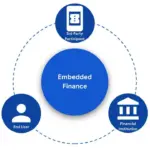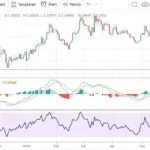The Markets in Crypto-Assets Regulation (MiCA) is one of the biggest regulatory efforts in the world aimed at bringing clarity, consumer protection, and stability to crypto markets. Since its adoption, MiCA has begun to change how crypto-asset issuers, exchanges, service providers, stablecoin issuers, and investors operate in the European Union. Below are the critical elements of MiCA, its effects so far, and what market participants need to know.
What is MiCA?
MiCA (Regulation (EU) 2023/1114) was adopted by the EU to establish a comprehensive, harmonised regulatory framework for crypto-assets and crypto-asset service providers (CASPs) that were not previously covered by existing financial regulation. (DLA Piper)
Key features include:
- Definitions and classifications of different types of crypto-assets, such as asset-referenced tokens (ARTs), electronic-money tokens (EMTs), and “other crypto-assets.” (europarl.europa.eu)
- Rules for issuers of crypto-assets (whitepaper requirements, disclosure, governance) and for CASPs (licensing, transparency, consumer protection). (europarl.europa.eu)
- Specific, stricter regulation for stablecoins, especially those that could have systemic importance. (europarl.europa.eu)
- Requirements related to market abuse, anti-money laundering (AML), transparency, custody of client assets, and operational resilience. (Cambridge University Press & Assessment)
- Transitional periods and deadlines: MiCA entered into force in mid-2023, with application phases starting December 2024, and full implementation / end of transitional regime by mid-2026. (Crypto Insider Mag)
Impacts Seen So Far in European Crypto Markets
Since MiCA’s enforcement began (December 2024 for full application of many rules), a number of effects—both intended and incidental—have become evident.
1. Greater Regulatory Certainty & Investor Protection
- MiCA provides legal clarity where previously there was regulatory uncertainty or fragmented rules across EU Member States. This helps investors understand their rights, the responsibilities of service providers, and which tokens are compliant. (europarl.europa.eu)
- Consumer protection measures (e.g. on disclosures, safeguarding of client assets, complaint handling) have become enforceable standards. This reduces risk of fraud, misrepresentation, or opacity. (DLA Piper)
2. Compliance Costs & Barriers to Entry
- Smaller or less well-funded crypto firms are finding it more challenging to meet the licensing, capital, operational, and disclosure requirements under MiCA. The compliance burden (legal, reporting, governance) can be significant. (mdpi.com)
- Some firms or projects may decide not to operate in the EU market (or scale back) due to these costs, especially if their business model or token type is more affected. (Crypto Insider Mag)
3. Stablecoins Under Stronger Scrutiny
- Issuers of stablecoins, especially those that could be systemically important, have been brought firmly under regulatory oversight: requirement for reserve backing, transparency of reserves, disclosures, and possibly caps on certain types of operations or transactions. (europarl.europa.eu)
- The regulation encourages issuers to adopt practices similar to e-money institutions or banks where applicable.
4. Market Structure & Competition Effects
- Providers that adapt well to MiCA may gain competitive advantage. Those that can secure licenses, manage compliance well, and offer transparent services may attract more customers and institutional trust.
- Some degree of market consolidation may occur: less compliant or too small players might exit, while larger, well-prepared firms consolidate. (mdpi.com)
- There is concern about regulatory arbitrage: different Member States might interpret or enforce MiCA differently, which still leads to fragmentations and possible uneven competition. (Cinco Días)
5. Innovation vs. Restriction Tension
- While MiCA aims to be innovation-friendly in principle, some in the crypto industry worry that strict rules (for whitepapers, disclosures, capital/reserve requirements, etc.) might slow down rapidly-evolving innovations (e.g. DeFi, tokenization, use cases around lending or staking) if out of scope or with uncertain status. (SpringerOpen)
- Also, services not fully covered by MiCA (e.g. some types of staking / lending / DeFi) are in legal grey zones, which may deter investment until legal clarity emerges. (Cinco Días)
6. Increase in Institutional Interest & Use of Compliant Platforms
- With clearer rules, some global exchanges and service providers are pursuing MiCA licensing so they can offer services across the EU with more regulatory legitimacy. This may attract institutional investors who prefer markets with regulatory oversight. (fnlondon.com)
- The requirement for transparency, audits, and stable reserve practices can increase confidence among both users and larger financial players.
Challenges and Areas of Concern
While MiCA has many positives, the implementation phase is not without friction and risks.
- Uneven Interpretation & Enforcement Across Member States Despite a harmonised regulation, national regulators have been interpreting some requirements differently—licensing standards, speed of approvals, rigor of supervision vary. Some countries may have looser oversight, which can cause concerns. (Cinco Días)
- Transition & Compliance Delays Some firms may miss deadlines or under-estimate the resources required. This may produce delays, product delistings, or disruptions in services. (Crypto Insider Mag)
- Risk of Overregulation and Stifling Innovation If rules are too rigid or costly, they may deter startups or smaller innovators. There’s a balancing act between protecting consumers and fostering innovation. (SpringerOpen)
- Gaps in Scope Certain crypto services (staking, some lending, decentralized platforms) are not fully covered or have ambiguous status under MiCA. These gaps create uncertainty for those operating or investing in those sectors. (Cinco Días)
- Market Fragmentation and Regulatory Arbitrage Even under MiCA, because enforcement and interpretation rest with national competent authorities, varying approaches by Member States could lead to differences in how strict or fast regulations are implemented, possibly giving advantages to jurisdictions with lighter oversight. (Cinco Días)
- Stablecoin Competition & “Euro-Stablecoin” Ambitions There is a desire within the EU to promote euro-denominated stablecoins, but current MiCA rules are being evaluated whether they optimally support this, especially relative to U.S.-dollar based stablecoins or those domiciled elsewhere. (Reuters)
What to Watch Going Forward
To fully understand how MiCA will continue to reshape the market, keep an eye on these developments:
- Implementation by National Regulators: How quickly and how strictly licensings are granted; how regulators interpret grey-areas like staking, lending, DeFi platforms.
- Supervisory Role of ESMA: Moves to expand oversight centralized through ESMA could reduce inconsistencies and oversee critical parts of the EU crypto market more uniformly. (ft.com)
- Stablecoin Issuance Dynamics: The emergence of euro-stablecoins or tokens issued under MiCA compliance vs the existing non-EU stablecoins adapting or restricting operations in the EU.
- Marketplace Reactions: Which exchanges / CASPs succeed under MiCA, which ones exit, which adjust their product offerings (e.g. delisting noncompliant tokens).
- Updates or Clarifications: As MiCA settles in, there are likely to be further guidance, possibly amendments, or judicial interpretations (or referrals) which clarify ambiguous parts (e.g. market abuse, hybrid token types) or additional regulatory requirements.
- Innovation & Investment Flow: Where venture / capital goes—whether EU continues to be a crypto innovation hub, or whether firms relocate to more permissive jurisdictions.
Conclusion
MiCA is a landmark regulation, arguably among the world’s most ambitious efforts to regulate crypto assets at scale. Its impact on European crypto markets has already been significant: bringing more clarity and protection for investors, raising compliance standards, reshaping how stablecoins and exchanges operate, and pushing market actors to align with more rigorous rules.
At the same time, it introduces costs and complexities, especially for smaller players; there are risks of uneven enforcement and unintended dampening of certain types of innovation. The full effects will become clearer as the phased implementation continues through 2025 and into 2026.
For investors or businesses operating in or with the European crypto markets, MiCA means greater emphasis on compliance, choosing partners or tokens that clearly meet regulatory standards, and staying alert to evolving supervisory practices. With the right approach, MiCA could foster a more stable, trusted, and mature crypto ecosystem in the EU—which may in turn set benchmarks for regulation globally.














